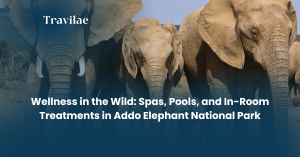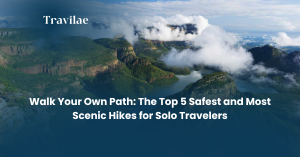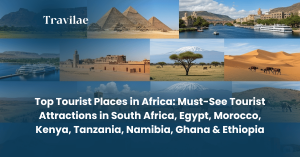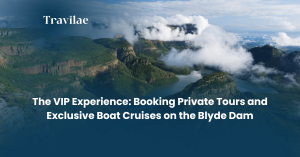The Desert’s Thundering Secret
Did you know that one of Africa’s most powerful waterfalls is hidden not in a lush jungle, but in a sun-scorched desert landscape? Welcome to Augrabies Falls National Park, the “Aukoerebis” or “Place of Great Noise,” as named by the original Khoi people. This is where the mighty Orange River plunges 56 meters into a granite gorge, creating a spectacle of raw, untamed power. But Augrabies is more than just a viewpoint; it’s a world-class adventure playground. This guide will walk you through the top adventure activities at Augrabies Falls, from heart-pounding rafting to soul-stirring hikes, ensuring you can plan a trip that’s as thrilling as it is unforgettable.
Table of Contents
Best Time to Visit for Adventure

Choosing when to visit depends entirely on your adventure priorities. The park offers a different kind of magic with each season.
For Peak Water Flow & Dramatic Views (March – May)
To witness the falls at their most ferocious, plan your trip for the late summer and autumn months. After the summer rains upriver, the Orange River swells, sending a thunderous volume of water into the gorge. While the weather is still hot, the visual and auditory power of the falls is an experience you’ll never forget.
For Hiking, Biking & Outdoor Activities (June – September)
If you’re here to conquer the trails, the cooler, drier winter months are your best bet. With pleasant daytime temperatures and chilly, clear nights perfect for stargazing, this is the ideal season for hiking and mountain biking. The water level is lower, but the landscape is more accessible and comfortable for full-day adventures.
How to Get There & Get Around
Augrabies Falls is located in the Northern Cape province of South Africa, a region known for its vast, open spaces.
- By Air & Road: The most common route is to fly into Upington Airport (UPN). From there, it’s a scenic 120 km (about a 1.5-hour) drive to the park. You can easily rent a car at the airport. While a 4×4 isn’t essential to reach the main camp, it’s highly recommended if you want to explore the park’s more rugged 4×4 trails.
- Getting Around the Park: The main camp, viewpoints, and the start of many trails are accessible with a standard sedan. However, to truly explore the remote areas like Echo Corner and the Wilderness Road, you’ll need a vehicle with high clearance or a 4×4. Guided game drives are also available and are a fantastic way to see the park at night.
Budget vs. Luxury: What to Expect
Augrabies can be experienced on almost any budget. Here’s a simple breakdown of potential daily costs per person (excluding car rental).
| Item | Budget Adventurer | Comfort Adventurer |
|---|---|---|
| Accommodation | R350 – R500 (Camping/Basic Chalet) | R1500 – R2500+ (Family Cottage) |
| Food & Drink | R250 (Self-catering) | R600 (Restaurant meals) |
| Park Fees | R63 (SA Citizens) / R252 (Int’l) | R63 (SA Citizens) / R252 (Int’l) |
| Activities | R0 – R300 (Self-guided hikes) | R800 – R1500+ (Guided rafting/drives) |
| Est. Daily Total | ~R900 | ~R3500+ |
Note: Prices are estimates and can change. Always check the official SANParks website for the latest rates.
Top Adventure Activities at Augrabies Falls
This is where the real fun begins. The park’s unique terrain is a natural playground for thrill-seekers and nature lovers.
Conquer the Trails: Hiking
The stark, rocky landscape is crisscrossed with incredible hiking trails.
- Dassie Trail (5 km loop): This self-guided walk is the perfect introduction to the park. It takes you through the gorge, past Arrow Point, and to the stunning Twin Falls, offering incredible views and a moderate challenge.
- Klipspringer Hiking Trail (3 days, 39.5 km): This is the ultimate Augrabies hiking challenge. A grueling multi-day trek through the remote wilderness, this trail is only open during the cooler winter months (April-October) and requires a high level of fitness. It’s a profound way to experience the silence and solitude of the Kalahari.
Ride the Rapids: River Rafting
An absolute must-do for any adrenaline junkie. Navigating the Orange River downstream from the falls offers everything from gentle paddling through serene gorges to tackling thrilling white-water rapids. Several local operators offer half-day and full-day trips, which must be booked in advance as they are highly dependent on water levels.
Explore on Two Wheels: Mountain Biking
Bring your own bike or rent one nearby to explore the park’s designated mountain biking trails. The routes range from easy gravel roads to more challenging technical sections. It’s a fantastic way to cover more ground and spot wildlife like giraffe, springbok, and the elusive klipspringer antelope.
More Adventures to Discover
- Night Drives: Join a guided drive after sunset to see the park’s nocturnal creatures, like the African wild cat, bat-eared fox, and aardwolf.
- Stargazing: The remote location and lack of light pollution make for some of the most spectacular stargazing in South Africa.
- Viewpoints: Don’t miss the panoramic views from Moon Rock and the echoing silence at Echo Corner.
Where to Stay: From Campfires to Comfort
The accommodation inside the park is managed by SANParks and caters to all travel styles.
- Budget & Solo Friendly: The park offers a well-maintained campsite for tents and caravans, as well as basic 2-bed chalets. These are perfect for self-caterers and those who want a more rustic experience.
- Premium Comfort: For more space and amenities, book one of the family cottages or the secluded chalets at the Oranjekom Gorge. These offer stunning views and more privacy, perfect for families or those seeking a more luxurious escape.
A Solo Traveler’s Moment: Silence and Roar
I stood at the main viewpoint long after the sun had set. The daytime crowds were gone, replaced by a cool desert breeze and a blanket of stars so bright they felt within reach. Below me, the falls were an invisible, thunderous presence, a constant roar that vibrated through the soles of my shoes. It was a moment of perfect contrast: the immense, chaotic power of the water and the profound, peaceful silence of the Kalahari desert. As a solo traveler, it wasn’t just an adventure for the body, but a powerful reset for the soul. That’s the magic of Augrabies—it reminds you how small you are, and yet, how connected you are to everything.
Sample 3-Day Adventure Itinerary
This itinerary blends iconic sights with thrilling activities.
- Day 1: Arrival and Sunset Spectacle
- Afternoon: Arrive from Upington, check into your accommodation, and get settled.
- Evening: Take a slow walk along the boardwalks to the main waterfall viewpoints. Stay for sunset and watch the light change over the gorge. Dinner at the park restaurant or a “braai” (BBQ) at your chalet.
- Day 2: Hiking and Nocturnal Discoveries
- Morning: Wake up early and tackle the 5 km Dassie Trail. Pack plenty of water and enjoy the epic views of the gorge.
- Afternoon: Relax by the pool, read a book, and escape the midday heat.
- Evening: Embark on a guided night drive to spot the park’s shy, nocturnal wildlife.
- Day 3: River Thrills and Departure
- Morning: Head out for your pre-booked half-day river rafting adventure on the Orange River. Experience the thrill of the rapids and the beauty of the riverine environment.
- Afternoon: After a final lunch, begin your drive back to Upington for your flight home, filled with memories of your desert adventure.
Augrabies Falls: Travel FAQs
1. Is Augrabies Falls National Park worth visiting? Absolutely. It offers a unique combination of a world-class waterfall, dramatic desert landscapes, and fantastic adventure opportunities that you won’t find anywhere else in South Africa.
2. How many days do you need at Augrabies Falls? 2 to 3 days is perfect to experience the main highlights, including a good hike and another major activity like rafting or a night drive. If you plan to do the multi-day Klipspringer trail, you’ll need 4 to 5 days.
3. Can you swim at Augrabies Falls? No. It is extremely dangerous and strictly forbidden to swim in the gorge or near the main falls due to the powerful currents and undertows. There is a swimming pool in the main rest camp for cooling off.
4. What is the best month to visit? For pleasant weather and hiking, go between June and September. For the most powerful waterfall display, visit between March and May.
5. Do I need a 4×4 to visit the park? A 4×4 is not required to access the main camp and viewpoints. However, it is necessary if you want to drive the park’s wilderness 4×4 trails, such as the one leading to Echo Corner.
6. What language is spoken in the area? The dominant local language is Afrikaans, but English is widely spoken and understood at the park and in all tourist facilities.
7. What should I pack for an adventure trip to Augrabies? Sturdy hiking shoes, a wide-brimmed hat, high-SPF sunscreen, a reusable water bottle, layered clothing (warm days, cool nights), a camera, and binoculars.
Your Adventure Awaits
Augrabies Falls is more than a destination; it’s an experience that awakens the senses. It’s the roar of the water, the heat of the sun on your skin, the silence of the desert at night, and the thrill of pushing your limits. It’s a place that proves the most beautiful things are often found where you least expect them.
Have you been to Augrabies, or is it on your bucket list? Share your travel dream in the comments below!






